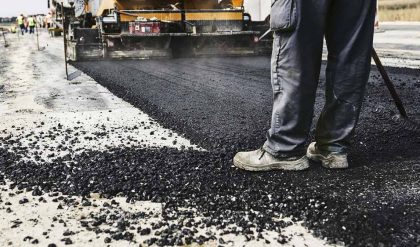In order to further distill the residuum or topped crude from the atmospheric tower at higher temperatures, reduced pressure is required to prevent thermal cracking. The process takes place in one or more vacuum distillation towers. The principles of vacuum distillation resemble those of fractional distillation except that larger diameter columns are used to maintain comparable vapor velocities at the reduced pressures. The equipment is also similar. The internal designs of some vacuum towers are different from atmospheric towers in that random packing and demister pads are used instead of trays. A typical first-phase vacuum tower may produce gas oils, lubricating-oil base stocks, and heavy residual for propane deasphalting. A second-phase tower operating at lower vacuum may distill surplus residuum from the atmospheric tower, which is not used for lube-stock processing, and surplus residuum from the first vacuum tower not used for deasphalting. Vacuum towers are typically used to separate catalytic cracking feedstock from surplus residuum.

- Vacuum Distillation Process
| Feedstock | From | Process | Typical products – to – unit |
| Residuals | Atmospheric tower g | Separation | Gas oils To Catalytic crackerLubricants To Hydrotreating or solventResidual To Deasphalter, visbreaker, or coker |


Comments are closed.